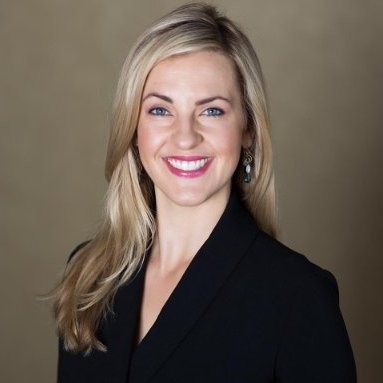Ashley Dittmar shares how she uses technology paired with the human instinct to engage and retain giving to organizations, year-over-year.
Subscribe on Apple Podcasts, rate, and review.
Technology for Donor Retention: Transforming Engagement
Technology for donor retention is transforming how nonprofits build lasting relationships with supporters. In Episode 44 of Creating Community for Good, Lindsay speaks with Ashley Dittmar about using digital tools, donor data, and intentional strategies to increase donor loyalty and year-over-year giving.
Maximize Your CRM for Personalized Engagement
“My hope is for all fundraisers to feel proud of their work raising critical resources for the nonprofits they serve by helping them implement strategies to create long-term, sustainable, and reliable revenue streams and donor communities.” Share on X
Did you know that only 23% of first-time donors give again? But after a second gift, that number jumps to 60%. That’s why your goal should always be to build trust, show impact, and make donors feel valued—starting right after their first gift.
While it’s important to grow your audience, long-term success depends on retention. As the song says: “Love the one you’re with!” (🎵 Link in show notes for full effect!)
Retention Is Queen: A 360° Portfolio Perspective
At Lindsay Simonds Consulting, we recommend nonprofits begin development reviews with a focus on current donors:
Are they receiving meaningful stewardship?
Are they satisfied with their experience?
Are they being engaged in ways that feel personal?
Look for ways to deepen involvement or upgrade giving. Also evaluate whether too much time is spent pursuing disengaged donors instead of cultivating loyal advocates.
Your existing supporters can become powerful ambassadors—offering testimonials, introductions, endorsements, and continued generosity.
Meet Ashley Dittmar: Tech-Driven Fundraiser with a Human Touch
Ashley Dittmar, Director of Development at Crisis Text Line, specializes in digital campaigns, retention strategy, and storytelling. In this episode, she shares how combining technology with emotional intelligence helps create scalable, yet authentic, donor engagement.
She emphasizes that retention is rooted in one essential truth: people give to people—not platforms.
Donor Psychology: GAILs and Growth
Ashley also introduces listeners to the concept of GAILs—Gremlins, Assumptions, Interpretations, and Limiting Beliefs.
These mental blocks limit fundraisers’ confidence and often interrupt growth—both personally and professionally. Questions to consider:
How many assumptions do we make without full information?
What limiting stories do we tell ourselves about our skills?
How often do we fear rejection that never comes?
By identifying and challenging these internal narratives, fundraisers can build resilience and deepen their donor relationships.
Redefining the Ask: From Transaction to Transformation
Also featured is a conversation with Mallory Erickson, who shares her game-changing approach to fundraising:
Transform the ask into an offering.
Instead of chasing dollars, she invites fundraisers to co-create purpose with donors. Her practical mindset strategies help reduce fear and increase meaningful, aligned giving.
Donor Retention: Why It’s Your Smartest Strategy
Donor retention measures how many supporters continue to give. Here’s the formula:
(# of donors last year who gave again this year / total donors last year) × 100 = Retention Rate (%)
The nonprofit sector averages a retention rate of 40–45%. That means if 100 donors give this year, only 40 are likely to return without intentional stewardship.
Retention is far more efficient than acquisition. It takes 3–4 new donors to replace the value of one loyal donor. So retaining your existing base isn’t just strategic—it’s essential.
Technology Is Your Ally in Building Connection
CRM systems can simplify and personalize donor engagement. With the right tools, you can:
Segment your audience
Schedule follow-ups
Track donor behavior
Customize messaging
Surprisingly, automation can enhance authenticity. When done well, it enables timely, tailored outreach that makes donors feel seen, not spammed.
As Ashley says, “Your revenue comes from real people who believe in your mission. Keep the faith alive.”
Tailor Your Strategy to Donor Types
Not all donors are the same. Some are:
Strategic givers with long-term plans
Impulse donors responding to an online appeal
Monthly supporters who value consistency
Each group deserves a tailored strategy—but all benefit from meaningful connection.
Even a templated email, when personalized, can foster loyalty. And yes, a well-scripted (but human) phone call still goes a long way.
Final Takeaway: Be Human. Stay Consistent. Use Your Tools.
Donor retention is about more than numbers—it’s about relationships, trust, and stewardship. Use technology to track progress and automate systems, but never forget the power of personal connection.
Join Lindsay and Ashley in this inspiring episode to discover how you can retain more donors, increase long-term revenue, and make your mission matter—year after year.
Key Takeaways:
8:55 – “Your revenues are empowered by people, not ATMs!”: How to engage your donor community and make them feel seen and appreciated.
13:28 – Why Ashley absolutely loves using CRM tools to understand data and generate killer retention strategies.
16:33 – Focus on retention first!: Remember, there are already golden donors in your database.
11:44 – From Excel to a CRM: How to level up and use key tools for more meaningful and personalized interactions.
25:55 – Ashley’s golden rule for reaching out: “Do not go out of any conversation or meeting thinking you wasted that person’s time.”
29:21 – Truly engaging in a human way: The importance of getting to know your donors, who they are, and what they are passionate about.
32:29 – “A happier you is a happier us”: How fundraising is truly Ashley’s calling and why that passion is exactly what we need.
Five Next Steps:
- Set a plan: plan your work, and work your plan.
- Segment your donor portfolio: include options such as first-time donor, second-time donor, monthly giver, long-time giver, donor in active proposal stage, mission affinity variations, geographic relevance, etc.
- Use technology: automate outbound messages to segments of donors that are relevant; and then customize a personal response to drive engagement and giving.
- Communicate regularly: check in quarterly with newsletters, phone calls, (virtual) gatherings, etc.; include personal header, acknowledge giving and areas of interest and open the funnel of information about your organization including success stories, impact numbers/stats, and overall learnings/growth.
- Pay attention: listen more than you talk and add notes in your CRM to ensure meaningful conversations and connections are had rather than one-way stream of info sharing. Ask high-value questions.
By the numbers as of early 2020:
Despite concerns that the COVID-19 pandemic would depress donations to nonprofits, giving in the U.S. in 2020 increased by 10.6% compared to 2019, with the overall number of donors growing by 7.3%, according to the Fundraising Effectiveness Project’s 2020 Fourth Quarter Report.
Notably, significant increases were seen at all giving levels, with smaller gifts (under $250) leading the way—growing by 15.3% over the previous year. Meanwhile, larger gifts ($1,000 or more) rose by 10.4%, and mid-level gifts ($250 to $999) improved by 8.0%.
However, donor retention—a key metric that tracks the percentage of donors who gave to a charity in both 2019 and 2020—declined by 4.1% during the same period.
Connect Ashley Dittmar
Through LinkedIn
Episode Resources
Theme song: Love the One You’re With, Stephen Stills
32: Jen Risher | We Need to Talk… About Wealth
Retention Rate Decreased Resource: AFP Fundraising Effectiveness Project
We Need To Talk: A Memoir About Wealth by Jennifer Risher
About Stacey Abrams | Fair Fight
Start Donor Retention Tracking on Day One
Don’t wait until year-end to calculate donor retention. Instead, begin tracking from the first day of the fiscal year—when retention starts at 0% or less than 1%. This method helps you monitor progress in real time as lapsed donors become re-engaged.
It also builds momentum, delivers consistent wins, and shifts the focus from revenue alone to long-term relationship-building. Over time, this approach leads to stronger revenue, a healthier pipeline, and a more loyal donor community.
Meet Ashley Dittmar
Ashley Dittmar is Director of Development at Crisis Text Line, leading major fundraising efforts and building a global, empathy-driven supporter network.
She previously led development at BlinkNow Foundation in Nepal, doubling revenue, boosting retention, and launching the organization’s first endowment.
Ashley began her career at UC San Diego, supporting low-income and first-generation students, then helped secure a $100 million gift.
She continued her impact at Project Concern International, launching a donor retention-focused annual giving program. Ashley holds an MPA from USC and a BA from San Diego State University. She serves as a mentor at The Preuss School UCSD, co-founded Classy Connect, and held a board position with AFP San Diego.
In her spare time, she enjoys traveling, exploring NYC, and spending time with her nephews.





